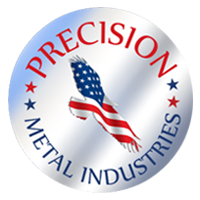Metal bonds come in all shapes and sizes, from seals on large storage tanks to precision fabricating spacecraft seams. Unlike brazing and soldering processes, which create bonds while leaving a metal workpiece intact, welding joins metal materials through fusion.
This unique joining process comes in many forms, and applies high enough temperatures to melt base metal workpieces and craft powerful bonds.
What Is TIG Welding?
TIG, or “tungsten inert gas” welding, is also known as Gas Tungsten Arc Welding (GTAW). The TIG welding process depends upon a tungsten electrode to create a power arc to produce appropriate heat, with a shielding gas to protect the weld from any atmospheric interferences.
Normally, the TIG welding process requires a filler metal — in fact, its tungsten-based system accommodates even unusual alloys and exotic filler metals that are lost in other welding processes, such as chromium.
The TIG Welding Process
The manual process of TIG welding notoriously requires some of the most particular skill: it demands both of the welder’s hands, one to hold the torch and the other to add filler metal to the working weld joint. This makes the process slower than comparable, more automated welding, but it is known to produce the highest quality and most versatile bonds.
TIG welding equipment requires immense operator focus and coordination, resulting in superior operator control as compared to competing welding processes.
A TIG welding machine relies on current from a constant power source to create a welding arc, though the quality of the arc can be affected by both the operator and machine components in use. For example, tungsten, the main ingredient in a TIG welding electrode, is available in varying compositions, depending upon the desired results.
Different metallic alloys supporting the electrode produce arcs with unique characteristics and performance. For example:
- Pure tungsten — Specifically used with A/C alternating current for aluminum TIG welding and magnesium
- Zirconium tungsten — Similar to pure tungsten, but supported with zirconium oxide for additional AWS classification
- Thoriated tungsten — Typically used with direct current, thoriated tungsten works well with carbon and stainless steel, chromium alloys, nickel, and most ferrous metals
Industries and Applications
Because of its thin workpieces and increased precision and control, TIG welding machines are popular with small diameter and thin-walled piping or tubing. The primary industrial user of the TIG welding process is the aerospace industry, as the process works well for space vehicles.
No other welding process offers so many unique alloy and filler metal options, making TIG welding extremely versatile, especially for the repair of tools and dies. The ability to utilize extremely specific, well-matched materials makes TIG welds extremely strong, with resistance to corrosion and cracking over time — an ideal fit for critical seals in the nuclear and power industries.
TIG welding is effective for almost any metal, including exotic materials and specialty alloys, and its precise and controlled application is essential for critical joints. It’s useful in a wide range of industries, including:
- Defense/Military
- Medical
- Aerospace/Avionics
- Energy
- Electronic enclosures
- Custom projects
Contact the team today to see how PMI can meet the TIG welding and fabrication needs for your next project.




